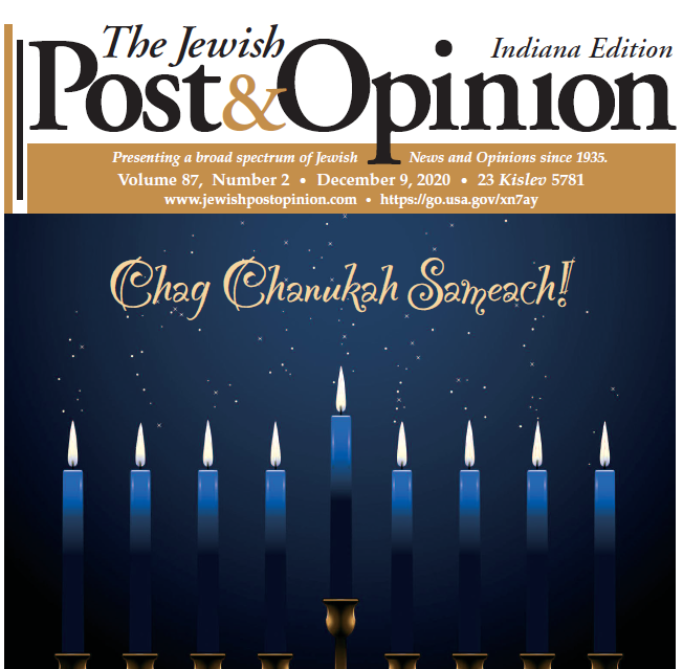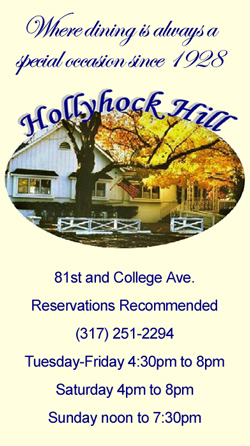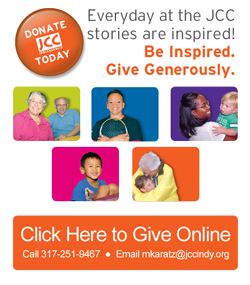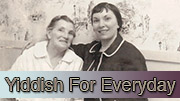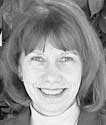
As a Holocaust educator, I see the need for all humanity to work for peace and justice so that “Never again!” becomes a reality for all people, and not just a slogan. For over a decade, I have been a member of a Jewish-Palestinian dialogue group and a multifaith group composed of lay leaders and their clergy. In so doing, I believe I am obeying Judaism’s mandate to help heal the world, “Tikkun olam.”
Judaism is who I am. That said, “I am a Jew” is not as descriptive of me as “Judaism is what I do.” My religion commands me to be a better person, provides answers to my “ultimate” questions and concerns, and places me within a community that is both historical and temporal. In addition, Judaism gives me spiritual nourishment, a means for healing and renewal, and a relationship with G-d. I love most all things Jewish.
So it was with deep disappointment that I discovered an area for which Judaism had no answers, no solutions. In 2001, after months of visual symptoms, I was finally diagnosed with Fuchs’ Endothelial Cornea Dystrophy (FD). Without a transplant, one gradually grows blind.
Wearing my lens as a Holocaust educator, “transplant” evoked images of heinous experiments in transplantation by Nazi doctors. Hapless concentration camp inmates suffered brutal procedures without anesthesia. To say that I was resistant to having a transplant was an understatement.
The disease usually manifests itself in midlife. Symptoms vary by individual, and if the progression of the disease is gradual enough, one could outlive the need for transplants. Caught early and with mild symptoms, I clung to this belief. Checkups with my San Francisco corneal specialist whose yearly refrain, “Very little increase in your cornea thickness – you’re doing fine; see you next year,” reinforced my denial.
My eyes lost their ability to regulate light resulting in problems with glare and night blindness. Fluids that built up in my corneas resulted in constant grittiness and the sensation of something being in my eye. Wraparound sunglasses during the day, letting my husband or friends drive me at night, and salt drops every three hours plus ointment twice daily that temporarily controlled the edema, kept my symptoms in check for over ten years. I learned to live with the sting that accompanied my tears by suppressing any impulse to cry. My biggest complaint was giving up on eye makeup because the drops made everything run.
But in 2011, my cornea specialist informed me that my eyes had crossed a threshold, and that I needed to consider having my transplants in the next 18 months. As I contemplated my upcoming surgeries, I realized that the most difficult part for me was accepting that my new corneas would come from cadavers.
I had no tools to deal with the fact that someone would die, and I would receive their cornea. I approached my rabbi with my concerns. He suggested I seek solace in the prayer uttered daily by observant Jews, praising G-d who enables the blind to see. But I wasn’t blind yet, and the prayer did not address my little understood resistance to accepting a cadaver-donated cornea. What was my relationship with the person whose death would restore my sight?
The Unetanneh Tokef prayer from the High Holy Days liturgy offered me more comfort. On Rosh Hashanah it is inscribed, and on Yom Kippur it is sealed: how many shall pass on, and how many shall be born; who shall live, and who shall die; who in his time, and who before his time; who by fire and who by water; who by sword and who by beast; who by hunger and who by thirst; who by storm and who by plague…(translation from Chabad.org).
Yom Kippur 2011. I spent the day fasting but restless, impatient with the proscribed prayers. My mind wandered to my upcoming surgery, thinking about the person who would die a few days before my procedure, whose corneal tissue would be implanted into mine. Only the Unetanneh Tokef prayer spoke to me. Praying so intently for the person who would perhaps die “before his time” resulted in my feeling a spiritual connection to him. And I had a strong sense that it was, indeed, a man. Because of privacy laws I could not know anything about my donor.
In January 2012, one of the top cornea specialists in the country, Dr. Francis Price of Indianapolis, Ind., performed an ultra-thin cornea transplant, “DMEK,” on my left eye. Within weeks, my visual acuity in that eye improved to 20/30. I returned to Indianapolis for my second DMEK in August 2012. As a native Hoosier, it pleased me to think that because I had my transplants in Indiana and not California, that my new corneas were also Hoosiers. Unfortunately, I took the success of my first surgery for granted and barely cast a prayer in the direction of my second donor.
As of this writing, uncorrected visual acuity in my left eye remains at 20/30; my right eye, 20/70. I fleetingly wondered if my difference in prayer regarding my two donors resulted in such a disparity. The good news is that both eyes are correctible to 20/20. Thus, with glasses, I enjoy perfect vision without the symptoms of Fuchs’. I have much for which to be grateful. Yet, I had a residual feeling of unfinished business regarding my donors, a need for closure. Was my relationship with them intimate enough to warrant my saying Kaddish (prayer for the dead) on the anniversary of my transplants?
In May 2013, the Shinnyo-en Foundation, connected with a Buddhist order of the same name, honored me for my participation in multifaith and Jewish-Palestinian dialogue groups and for promoting peace in my writings. The Foundation invited me and seven others to be guests in the 2013 Floating Lantern Ceremony on the shores of Honolulu during Memorial Day weekend. Together, we represented a variety of faith traditions and levels of peace activism.
Front row: Ineko Tsuchida, Ph. D., Program Director, Shinnyo-en Foundation; Rabbi Elisheva Salamo, Kedem Congregation, Palo Alto, Calif.; Rev. Kristi Denham, Pastor, United Church of Christ, Belmont, Calif.; Miriam Zimmerman; Rev. Tsutomu Ben Takagi, Vice President Shinnyo-en Foundation. Second row: Father Al Baca, Ecumenical and Interreligious Affairs Officer for the Diocese of Orange, Calif.; Eltaro Hayashi, Clergy, Shinnyo-en; Deacon Matt Dulka, Regional Director for the Western Region, Maryknoll; Rev. Dr. Jonathan B. Lee, Director of Institutional Advancement, Hartford Seminary, Conn.; Morteza Rezazadeh, envoy of the interfaith center in Qom, Iran and graduate student in the International Peacemaking program, Hartford Seminary, Conn.. Not pictured: Mahmut Altun, Director of the Pacifica Institute, Sunnyvale, Calif., who took the picture. Picture courtesy of Mahmut Altun.
I had never been to Hawaii before. The palm trees and busy thoroughfares of Honolulu reminded me of southern California. But the ubiquitous tropical foliage made me feel as if I were, indeed, in a different world. Picture courtesy Mahmut Altun.
The name “Shinnyo-en” indicates “a garden open to all, where everyone can discover and bring out their true nature”; a site conducive to spiritual awakening. Shinnyo-en is a lay Buddhist order based on the final teachings of the Buddha, the Nirvana Sutra. A “sutra” is a sacred Buddhist text.
In his final discourse, according to a brochure on Shinnyo Buddhism, the culmination of the Buddha’s 45 years of teachings emphasized that “everyone can attain enlightenment” and all are to be welcomed “to the path of cultivating the four virtues of loving kindness, compassion, joy, and equanimity.”
The Foundation that shares its name supports the vision of this global order, which serves people around the world and not just in Japan where it has its global headquarters.
<+>
A rainbow appeared prior to the Floating Lantern Ceremony 2013.
Pictured: Mahmut Altun, Deacon Matt Dulka, and Miriam Zimmerman. Picture courtesy of Mahmut Altun.
What appeals to me about this form of Buddhism is the way it directs people to find enlightenment within themselves. In so doing, each individual can find their true self, their “inner Buddha.” It challenges its adherents to act with compassion and concern for others. Its slogan, “Six Billion Paths to Peace,” refers to Shinnyo-en’s mission to help people have deeper compassion for all humanity and promote harmony and peace on a global scale. If everyone did just that, we would, indeed, have peace in our time.
It reminded me of a Jewish teaching, that if all Jews would observe the same Shabbat with the proper level of observance, the Messiah will come. In multifaith work, we are encouraged to discover linkages among our various traditions and to value our differences. Never mind that humanity has passed the seven billion mark; these concepts overlap considerably. Isaiah 11:6, “The wolf shall dwell with the lamb, and the leopard shall lie down with the kid…And the lion shall eat straw like the ox.” Judaism teaches that when the Messiah brings peace, we will all become vegetarians.
We were emailed reflection questions in advance of our trip to prepare us to dialogue with our fellow guests. Our packed itinerary included a visit to the Manoa Heritage Center, a nonprofit that promotes the natural and cultural heritage of Hawai’i (I learned the proper spelling of this state). We were given a tour of the mansion and its grounds, which included a sacred stone wall temple. After the tour, we enjoyed Mamaki tea served in a lanai and listened to the docent explain Hawaiian traditions. The Shinnyo-en religion honors indigenous populations and their traditions, and does not have as its mission to convert others.
My Holocaust filter reminded me of the “teaching of contempt” that resulted in centuries of anti-Jewish persecutions sanctioned by official church canon and edicts. There is so much room for healing between Christians and Jews. I wished all religions could borrow from the tolerance and understanding of Shinnyo-en. “Dialogue across religious and cultural traditions is a core value of Shinnyo-en Buddhism.”
A tour of the Shinnyo-en Hawai’i Temple enabled us to learn more about this Buddhist order. Founded in 1936 by Shinjo Ito and his wife Tomoji Ito in a suburb of Tokyo, the order has over one million members worldwide. Shinjo Ito described Shinnyo-en as a “garden without fences or hedges in which anyone is welcome just as they are.”
The Floating Lantern Ceremony itself is “drawn from ancient Asian religious traditions.” The candle represents “light in the heart that is never extinguished”. Shinnyo-en adapted the ceremony “to create a contemporary, interfaith celebration of and thanksgiving for the lives of the people who came before us and made our lives easier and richer.” Honoring the dead is an important part of Jewish tradition as well: the annual Yahrzeit ritual at the anniversary of the death of one’s parents, saying Kaddish four times per year on various holy days.
The theme of this year’s Lantern Floating Hawai’i was “Many Rivers, One Ocean.” This metaphor echoes the final teaching in the Nirvana Sutra to conclude, “Truth is revealed in all faiths.” Master Shinjo Ito, founder of the order, rejects “divisive ideas, such as calling other religious views heretical.” His daughter, the current head of Shinnyo-en, Her Holiness Shinso Ito, officiated at the ceremony, the largest Memorial Day observance in the U.S.
In keeping with such observances, we were encouraged to honor “those who sacrificed their lives in war and who have been victims of natural disasters, famine and disease.” But we could do whatever we wanted: writing prayers, listing names, or even leaving our lanterns blank.
In the afternoon of Memorial Day, we were taken to the VIP hospitality tent on Ala Moana Beach. Volunteers gave us a canvas bag containing a kit to assemble our floating lanterns. A foam board base with a hole in the center perfectly accommodated the included candle. The candle seemed identical to the Shabbat candles I kindle every Friday night to usher in the Sabbath.
Heavy parchment unfolded to create a cube, open at the top and bottom. The front parchment panel contained both an English inscription “All Spirits Related to the Lantern Floating Hawai’i,” and a Japanese inscription. Before I removed the strategically placed contact paper to permit me to adhere the parchment to the base of the lantern, I was encouraged to write on three of the parchment panels.
The first two panels were easy. On one side, I wrote a prayer honoring my parents and all their ancestors and my husband’s parents and their ancestors. On the opposite side, I wrote a prayer for all the children lost in the Holocaust, children who have no children to say Kaddish for them. Someone took a picture of me holding my lantern with my camera phone.
On the back panel, I decided to write a prayer honoring my two cornea donors. As I wrote this prayer from my heart, I suddenly realized that my tears no longer sting my eyes.
The outdoor ceremony took place on a huge temporary stage with a jumbotron that allowed hundreds to view the ceremony. The picture, courtesy of Mahmut Altun, includes Her Holiness, Shinso Ito, seated in the first row on the stage, wearing an orange robe. The ocean is off to the right.
At sunset, the warm beach of Ala Moana permitted me to walk into water above my knees. The volunteer lit the candle of my lantern, which glowed as I cast it onto a gentle wave. It was such a relief not to feel like I had to suppress my tears. I watched as my lantern joined thousands of others gently bobbing out to sea, until I could no longer distinguish it from the others. I thought of the Rosh Hashanah ritual of Tashlich, casting bread onto the waters to release symbolically one’s sins.
Over 42,000 observers, from Hawai’i and all over the world, crowded onto the beach to experience this ritual. Surprisingly, I felt a spiritual bonding with them, a connectedness to strangers that I had thought possible only at services in the company of my fellow congregants, with the familiar prayer book and songs, and led by my beloved rabbi, Nat Ezray.
As my lantern floated out to sea under a magnificent sunset, my donors came to mind once again, and I felt both a release and a closure. I am at peace with the thought that two people died, and a small part of them lives within me. It occurred to me for the first time that perhaps they approve.
The natural beauty of the scene, the intensity of the ceremony, and the ritual of casting a lantern into the sea with my handwritten prayers inscribed on it, were as powerful for me as any Yom Kippur observance. I will always remain a Jew. But the Floating Lantern Ceremony opened my heart and my mind to the reality that religious experience is not always confined to one’s own tradition, and that it is possible for people to come together in peace without having to convince one another that their religion is the right one.
I am so grateful to the Shinnyo-en Foundation and to Rev. Kristi Denham, for making this profound experience possible. To learn more about the 2013 Floating Lantern Ceremony and Shinnyo-en, browse to http://www.shinnyoen.org/beliefs-practices/fire-water-ceremonies/lantern-floating.html.
